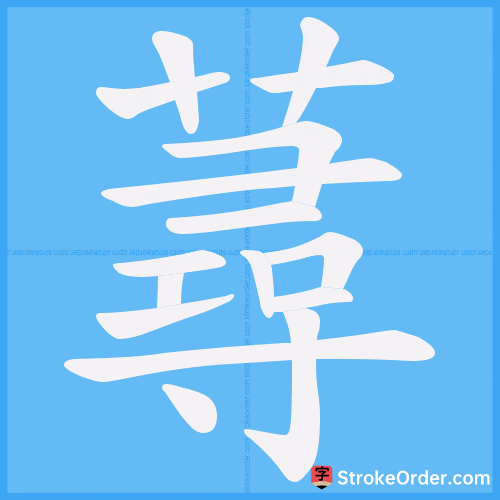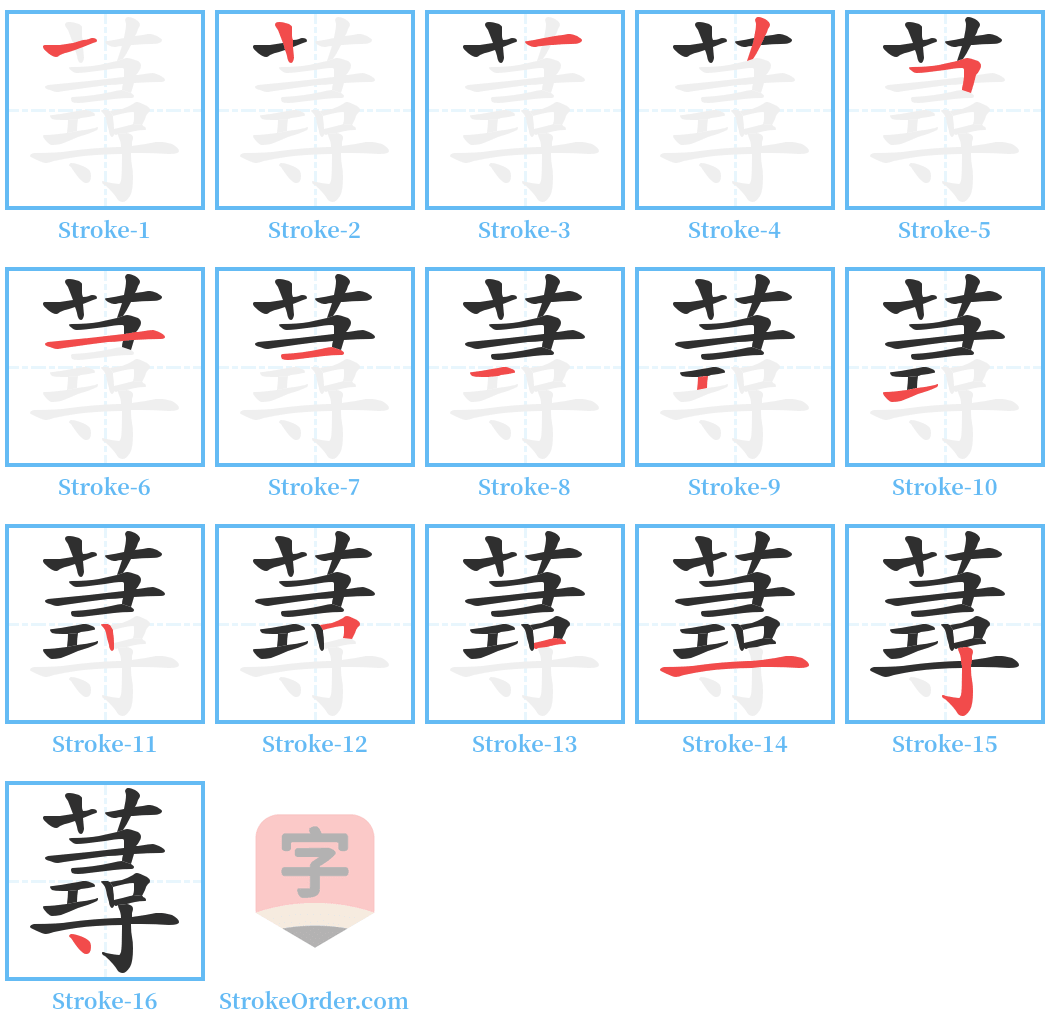蕁 Stroke Order
Animated Stroke Order of 蕁

Stroke Order Diagrams for 蕁

Information of 蕁
Pinyin
qián、 xún
Radical
艹
Strokes
15 strokes
Usage
★★
Definition
蕁 (qián)
1. (noun) [蕁麻] a. A perennial herbaceous plant with ovate leaves arranged oppositely. It has small flower spikes, and the stems and leaves are covered with fine hairs that can cause a stinging sensation upon skin contact. The fibers from the stem can be used as textile raw material and can also be used to make hemp ropes; b. The stem fibers of this plant.
2. (noun) [蕁麻疹] A type of allergic rash commonly known as "hives."
3. (noun) A plant name, referring to (知母). It belongs to the lily family and is a perennial herb. It is native to the mainland regions. The underground stem roots grow horizontally, and the leaves are long and clustered with parallel veins. The underground rhizomes can be used in medicine, having effects such as reducing fever, moistening the kidneys, and clearing the heart and lungs.
4. (verb) To burn upwards. Example: In "Huainanzi: Tianwen," it states: "Fire burns upwards, water flows downwards."